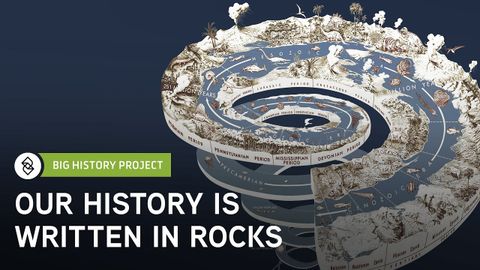
Subtitles & vocabulary
Introduction to the Geologic Time Chart | Big History Project
00
leo posted on 2015/06/21Save
Video vocabulary
mean
US /min/
・
UK /mi:n/
- Noun (Countable/Uncountable)
- Average of a set of numbers
- A method, course of action, or instrument by which something can be accomplished.
- Verb (Transitive/Intransitive)
- To express a particular idea or thought
- To intend to do something in particular
A1TOEIC
More time
US /taɪm/
・
UK /taɪm/
- Uncountable Noun
- Speed at which music is played; tempo
- Point as shown on a clock, e.g. 3 p.m
- Transitive Verb
- To check speed at which music is performed
- To choose a specific moment to do something
A1TOEIC
More period
US /ˈpɪriəd/
・
UK /ˈpɪəriəd/
- Noun (Countable/Uncountable)
- Set amount of time during which events take place
- A way to emphasize what you will say
A1TOEIC
More life
US /laɪf/
・
UK /laɪf/
- Noun (Countable/Uncountable)
- All the living things e.g. animals, plants, humans
- Period of time things live, from birth to death
A1
More Use Energy
Unlock All Vocabulary
Unlock pronunciation, explanations, and filters
